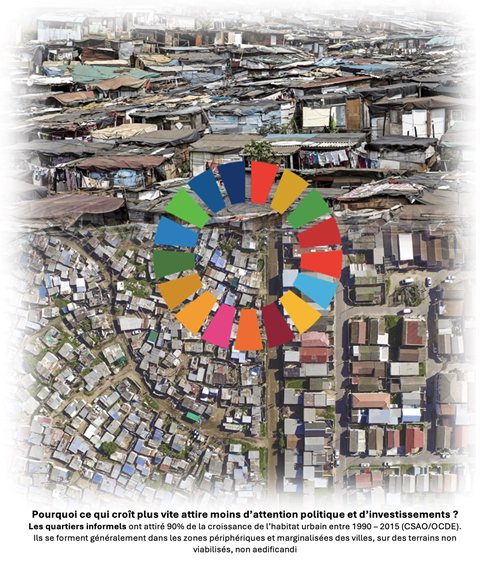By Luc Gnacadja*
As global leaders gather for New York Climate Week starting 22 September, they will have to further confront a hard truth: even if all greenhouse gas emissions ceased today, the world would still be on a trajectory beyond 2°C, due to the irreversible footprint of past emissions—as recent findings by James Hansen and colleagues warn. Climate adaptation is therefore no longer optional: it is a universal imperative, and even more so for developing countries. In this sobering context, adaptation finance remains fragmented, underfunded, and misaligned with those who need it most. Born on African soil, the Adaptation Benefits Mechanism (ABM) offers a compelling alternative—one that puts value on results, not rhetoric, and ensures that those most affected can define, lead, and benefit from their own adaptation efforts.
In Africa, adapting to climate change is more than a matter of survival, it is the frontier where global climate finance must be reimagined. While the world still treats adaptation as the “poor cousin” of mitigation—underfunded, reactive, and marginalized—Africa has both the urgency and the vision to chart a different course.
What if, instead of being last in line for climate funds, Africa showed the world how to turn adaptation into a driver of prosperity, resilience, and inclusive growth?
From Idea to Delivery Engine
Launched in 2019 by the African Development Bank (AfDB), the Adaptation Benefits Mechanism (ABM) was created to unlock results-based finance for adaptation. It has since evolved into a pioneering model of how adaptation can be financed with transparency, credibility, and local ownership.
Earlier this year, ABM became the first officially registered non-market approach (NMA) under Article 6.8 of the Paris Agreement, a recognition of its strategic value in the evolving climate finance landscape.
Why am I thrilled about this? Because the ABM is proving that with just a fraction of the funds allocated to mitigation via carbon markets, adaptation can be measurable, accountable, and investible at scale. It also shows that local communities can be at the center of the equation.
Valuing What Matters
Unlike mitigation, which is easily quantified through emission reductions, adaptation has long lacked an equivalent unit of value. ABM filled that gap by introducing the Certified Adaptation Benefit (CAB): a measurable, verifiable outcome of a host country–approved adaptation action.
The mechanism is not a funding source per se. Rather, it enables climate actors to invest in certified adaptation outcomes that are transparent, accountable, and impact-driven. It enhances ambition, de-risks early-stage investment, and incentivizes private sector engagement—while ensuring that real benefits flow to vulnerable communities.
ABM’s pilot phase has already demonstrated its viability through real projects and early methodologies, attracting strong interest from governments, development banks, and private actors alike. It was never meant to remain small; it was designed to scale—and the pieces are now falling into place.
A Financing Continuum
ABM’s strength lies in both its logic and its flexibility. From the outset, its project cycle was designed around a forward-looking instrument—now referred to as the ex-ante model—which allows implementers to access upfront capital through an Adaptation Benefit Supply Agreement (ABSA). This helps de-risk early-stage adaptation and mobilize private co-financing.
Later, the ex-post model emerged to complement this, certifying outcomes after implementation and generating CABs that can be monetized to support replication or reinvestment. This introduces a virtuous cycle of reinvestment, where adaptation outcomes are not just funded once, but become catalysts for scale. Together, the two modalities create a continuum of credibility and continuity: one enabling readiness, the other ensuring sustainability.
A compelling illustration is the SLAMDAM pilot in Omojuwa Estate, Kosofe Local Government Area of Lagos, Nigeria[1]. There, a mobile, water-filled barrier was deployed under the ABM pilot to protect over 5,000 residents, 50 small businesses, six primary schools, a motherless-child orphanage, and critical infrastructure. Through ex-ante financing, projected benefits like infrastructure protection and uninterrupted access enabled upfront capital deployment. Now, ex-post verification of actual benefits is underway, demonstrating how ABM can both prove effectiveness and scale life-saving technology.
Localized, Scalable, Strategic
The true promise of ABM lies in its programmatic use at subnational levels. Local governments and community-based organizations can aggregate portfolios of adaptation activities—resilient agriculture, nature-based solutions, early warning systems—under one methodological umbrella.
These localized portfolios can align with National Adaptation Plans (NAPs) and Nationally Determined Contributions (NDCs), and become integral to country platforms that channel climate finance to the last mile.
ABM thus becomes more than a mechanism. It becomes a delivery platform—scalable, modular, and rooted in local agency.
Born on African Soil
Born on African soil, ABM challenges the usual power dynamics of climate finance by placing agency in the hands of those most affected. It is a demonstration that African leadership doesn’t wait for permission to innovate—it designs mechanisms worthy of global adoption.
Africa is on the frontline of climate vulnerability, yet too often at the back of the line when adaptation finance is distributed. ABM offers a credible, African-born model to reverse that trend—one that values local knowledge, strengthens institutions, and builds public–private synergies, while reinforcing agency over dependency.
For African governments, ABM can become a strategic vehicle for operationalizing NAPs and NDCs, while reinforcing the role of subnational actors. For the broader Global South, it offers a replicable framework that combines ambition, accountability, and agency.
From Fragmentation to Coherence
One of the persistent challenges in adaptation finance is fragmentation. Too many efforts remain isolated, donor-driven, and disconnected from national strategies. ABM offers a compelling alternative: structured, verifiable, and modular pathways for impact.
Scaling ABM will require credible methodologies, decisive institutional support, and a robust enabling environment. But the building blocks of a new adaptation finance architecture are already being laid.
If adaptation continues to be treated merely as a cost, Africa will remain sidelined. But if the world dares to learn from Africa’s innovations—like the Adaptation Benefits Mechanism—then adaptation can become the very arena where climate finance is reimagined.
The real question is no longer whether Africa is ready. It is how boldly Africa will lead the way—and whether the world will have the wisdom to follow.

Erosion-damaged infrastructure on the Benin coast
a stark reminder of the climate adaptation imperative facing African communities.

[1] IT Edge News, “Lagos community becomes first in Africa to implement AfDB’s innovative flood solution.” https://www.itedgenews.africa/lagos-community-becomes-first-in-africa-to-implement-afdbs-innovative-flood-solution
📄 This article is also available as a PDF. Click here to download.

